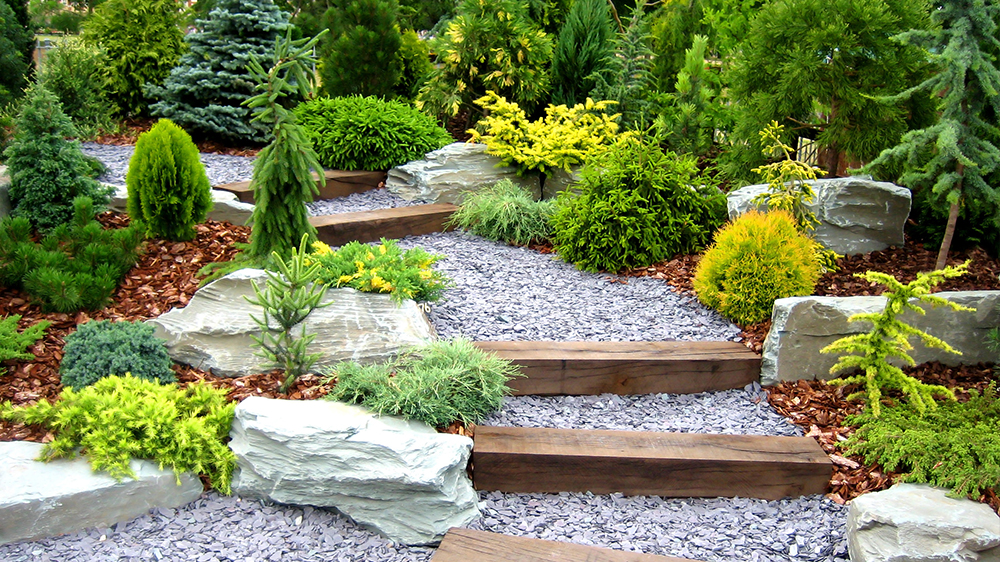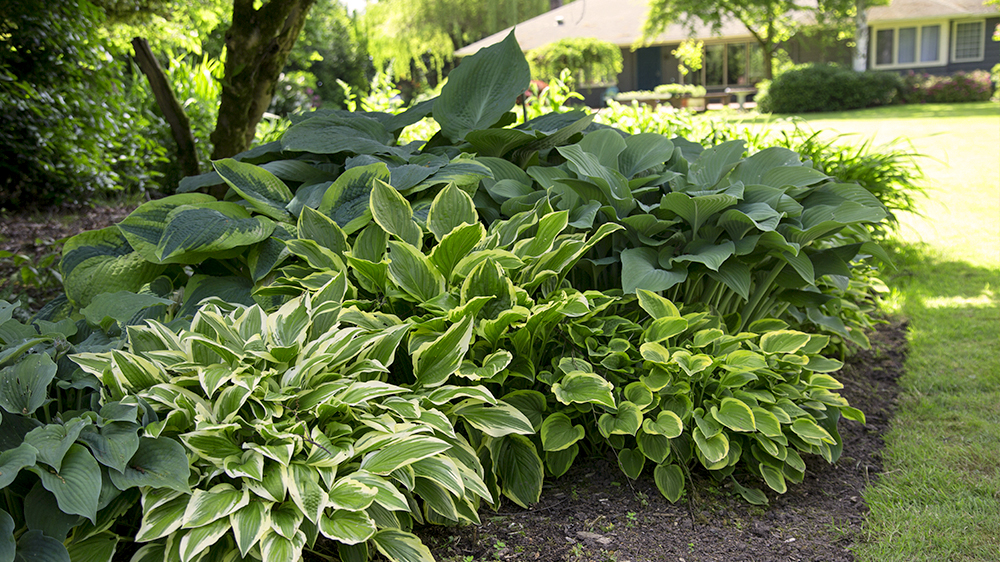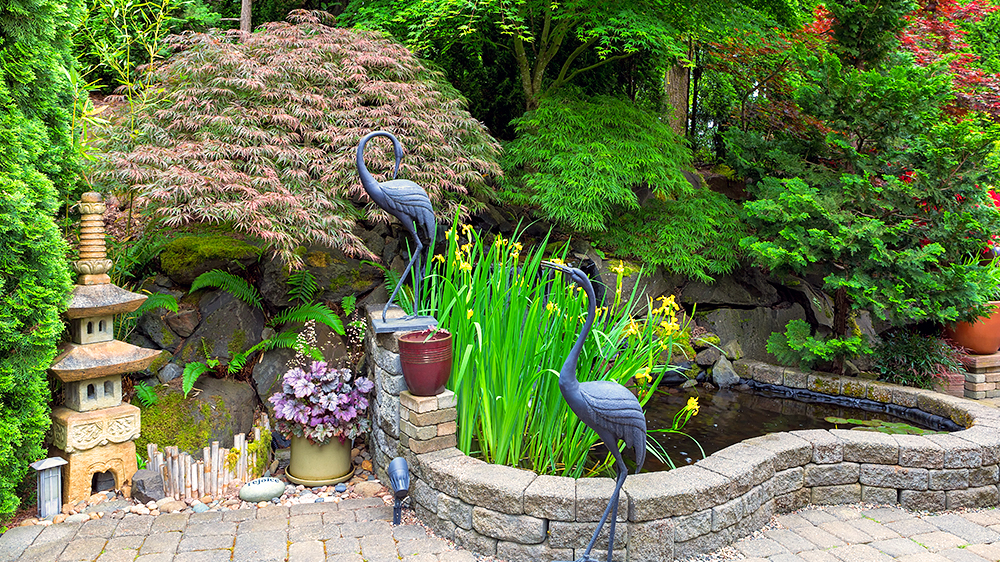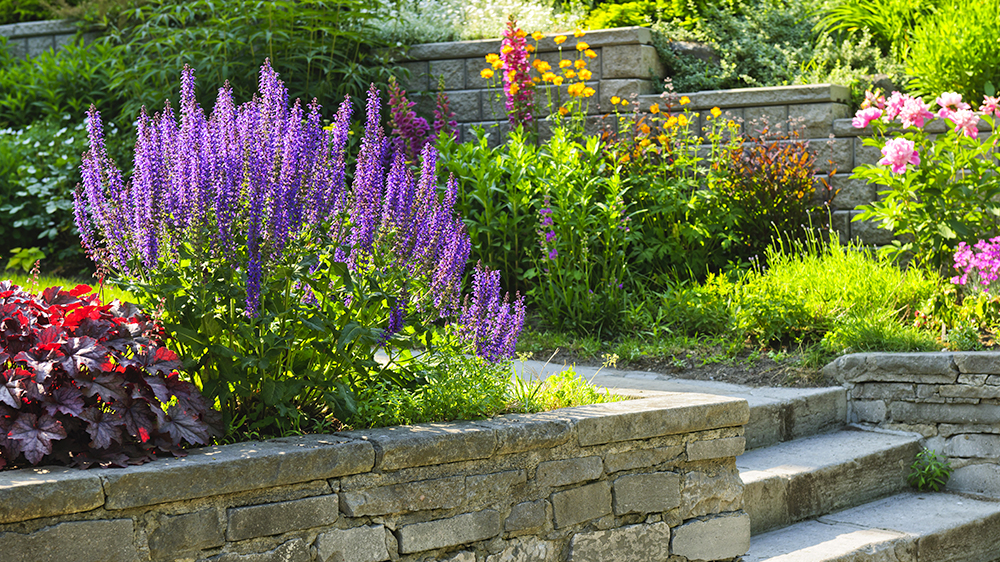
So, you wanna kick off your own landscape design project, but aren’t totally up to speed on all the key principles and terms? That’s fine—we all gotta start somewhere! We’re gonna break down some of the basics of landscaping you should acquaint yourself with, so you won’t be in for any surprises when you begin your backyard makeover.
Stone VS. Mulch
Stone and mulch are two common materials used in landscape designs, and while they serve similar purposes, both have several key differences in terms of appearance, price, and function. Essentially, they are both used to cover areas of terrain in place of grass or plants.
Stone is a highly attractive material for spreading across terrain, as there are so many different colors and sizes to choose from. It’s incredibly durable and will withstand the tests of time, and can be easily cleaned with a hose or power washer. It’s a bit more on the expensive side, but it’s a great investment because you won’t need to replace it for many years, if at all. If you want a low-maintenance yard that’s still visually stunning, stone is the way to go.
Mulch can be made from many different materials, but more often than not, it is made from pine bark. This bark can be treated with colorants to give it more of an attractive appearance, though we recommend opting for mulch treated with an all-natural dye, so it won’t end up leaching chemicals into the soil. Mulch can be spread across garden beds all around the bases of plants, and this actually provides a ton of benefits to your plants themselves.
Mulch blocks the sun from heating up the soil too quickly, which helps to retain moisture for your plants during the hottest summer months. It also helps block weeds from sprouting. Since mulch is a natural material, it will start to break down, and this provides the benefit of delivering healthy bacteria and nutrients into the soil steadily over time. On the flip side, this also means eventually it won’t look so great anymore, and you’ll need to scrape it off and replace it.
Overall, stone is a bit fancier looking, is long-lasting and a bit pricier, but doesn’t provide many benefits to your garden plants. Mulch is relatively inexpensive, has a more rustic vibe, needs to be replaced every year or two, and provides your plants with a wide range of benefits to help them grow.

Take Note Of The Sun And Wind
Before you go ahead with creating your design plans, it’s very important to pay close attention to the way the sun hits all areas of your yard throughout the day, and the way the wind whips around the different corners of your yard. You may find that the cozy corner where you wanted to install a bonfire pit is actually super drafty, which could result in a pretty tedious fire-starting process.
If you plan on having a lot of garden space, you should definitely be mindful of the amount of sun each area is getting. If there’s a lot of shade, no need to fret—there are plenty of plants, like hostas, that grow beautifully in shadier areas. Alternatively, if there are many spots in the yard that get a lot of direct sunlight for most of the day, you’ll want to choose plants that are heat-tolerant and won’t get scorched.
Put Compatible Plants Together
If you’re putting together a large garden space, you’ll want all the flowers to be compatible neighbors! This pretty much means that you’ll want to pair up flowers with similar needs in terms of sunlight, water, and soil quality. If one flower prefers tons of water, and the one right next to it prefers dry soil and occasional watering, you’re gonna have a tough time keeping both of them happy.
It’s also important to determine the growth habit and spread of your chosen plants. Some plants are very slow growers, where others are super aggressive growers and can border on invasive. Try to place plants with similar growing habits together, so one won’t end up drowning out the others.

Explore Water Features
Water features are an amazing way to really amplify the beauty and visual impact of your landscape. There’s just this peaceful, serene quality that they add to the atmosphere, making your yard feel so much more inviting and hospitable. There are plenty of ways to add water features into your yard, including:
- Bird baths
- Wall fountains
- Tiered fountains
- Sculptural fountains
- Ponds
- Water gardens
Adding a pond or water garden into your design can be an especially fun project to undertake because it gives you so many new options for plants and other wildlife to introduce to the landscape. Lots of beautiful flowers and foliage plants, like water lilies, create gorgeous displays in small bodies of water. You could even put some fish in the pond, with the right conditions and equipment!

Retainer Walls 101
Retainer walls are a fantastic way to establish different levels and heights of terrain in the yard. They function to hold up the soil and plants on one side, so they are elevated and separated from the lower levels. While they look quite simple, as they are generally made from stacked stone, we definitely recommend getting one of our trained landscape designers to help you undertake your retainer wall construction. The wall needs to be sturdy and resilient, and with our unpredictable weather here in the midwest, you want to be confident that your retainer wall is going to stand strong through heavy rain and snowstorms.

Want to enlist the help of our experts to help you visualize and execute your ideal landscape design? We work closely with several talented, trusted landscapers in Illinois and Indiana, and our designers are skilled at selecting the right folks for the job, based on your landscape specifications, budget, and overall vision. Call us at the shop or speak to one of our experts in-store to assess your project and take the next steps to making it happen!
